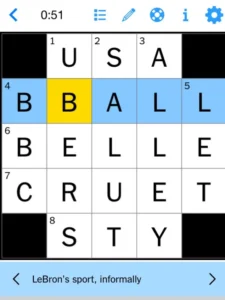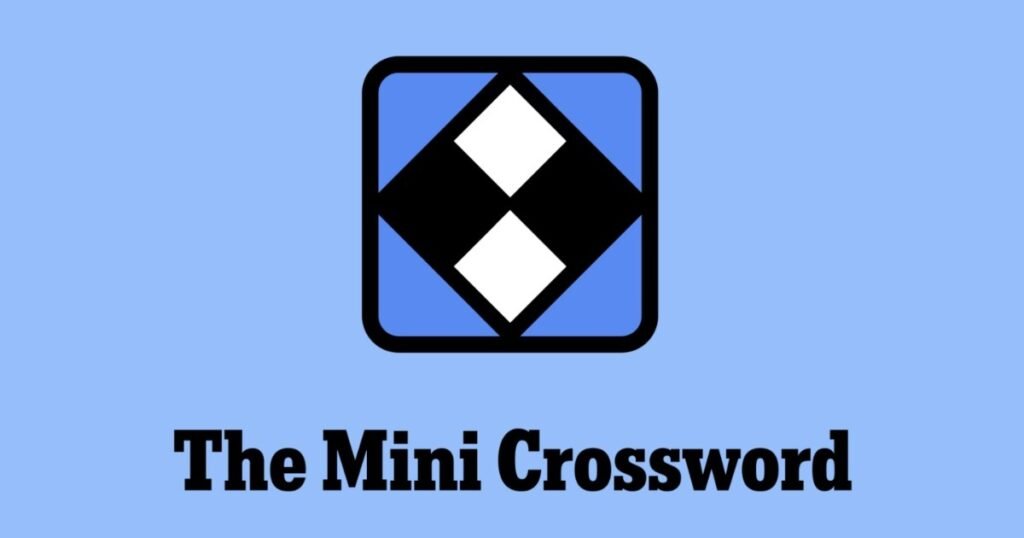Understanding Mini Crosswords
mini crossword hint are a compact version of traditional crossword puzzles, typically featuring a smaller grid size and fewer clues. These puzzles generally consist of a 5×5 or 7×7 grid, making them more approachable for casual players or those who may find larger crosswords daunting. The main distinction between mini crosswords and their traditional counterparts lies in their manageable size, which contributes to an engaging yet less time-consuming experience. This compactness has driven their rising popularity among individuals seeking a quick intellectual challenge during their daily routines.
The typical structure of a mini crossword includes a simple layout that often mirrors the classic crossword format, with both across and down clues. Players are presented with fewer clues, usually numbering around five or six, allowing for quicker solving times compared to larger grids. Despite this reduced size, mini crosswords maintain the same level of challenge and fun, utilizing clever wordplay, puns, and a range of vocabulary that often incorporate common phrases and cultural references. The clues can vary in difficulty, which enhances the overall experience by providing both novice and seasoned puzzlers the opportunity to enjoy the game.
Additionally, mini crosswords frequently incorporate thematic elements or specific word types, which can guide the solver in uncovering the correct answers. A well-crafted mini crossword hint may include definitions, synonyms, or associations that encourage critical thinking and improve the overall solving strategy. As players become familiar with common clue types found in mini crosswords, they develop the skills necessary to decipher hints more effectively and advance their solving proficiency. This understanding sets the stage for appreciating more complex clues and enhances the overall enjoyment of tackling these delightful challenges.
Dynamic Types of Hints in Mini Crosswords
Mini crosswords are engaging puzzles that often boast a variety of hint types, each designed to challenge the solver in unique ways. Understanding these different categories of hints is crucial for developing effective strategies. The most straightforward hints are typically clear and direct, providing a word or phrase that directly corresponds to the answer. For example, if the hint reads “feline pet,” the answer is likely to be “cat.” This type of mini crossword hint is the easiest to approach, requiring little more than basic vocabulary knowledge.
On the other hand, cryptic hints add an element of complexity, often relying on wordplay, anagrams, or double meanings. For instance, a hint such as “not new” could lead a solver to answer with “old,” while the phrasing might obscure its connection initially. This category demands a more nuanced approach and a playful mindset, as solvers must think creatively to reach the solution.
Pun-based hints are another entertaining aspect of mini crosswords. These clues often involve a humorous twist that may lead to playful interpretations. An example might be “take a break” to indicate the answer “rest.” This hint type invites solvers to adopt a more relaxed and open-minded approach, enhancing the enjoyment of the puzzle.
Visual clues also play a significant role in some mini crossword puzzles. These hints could include symbols, pictures, or even diagrams that offer vital information about the answer. For example, a picture of a heart alongside the hint might suggest “love.” This form creates a multi-sensory experience that enriches the solving process.
Overall, each type of hint in mini crosswords requires distinct strategies. By familiarizing oneself with these nuances, solvers can enhance their problem-solving skills and enjoy the unique challenges that accompany each puzzle format.

Tips and Strategies for Deciphering Mini Crossword Hints
Solving mini crossword puzzles can be an enjoyable yet challenging task, primarily when deciphering the often cryptic mini crossword hints. To enhance your effectiveness in solving these puzzles, it is crucial to employ certain strategies that can lead to improved comprehension and increased satisfaction. One effective technique involves identifying keywords within the clues. Often, specific words can hint towards their meanings, thus guiding players to the answers. Therefore, honing your ability to spot these keywords is essential.
Another important strategy is to familiarize yourself with common crossword conventions. Many crosswords, including mini formats, utilize standard abbreviations, synonyms, or cultural references that recur frequently. Understanding these convention-based shortcuts can enable you to quickly derive answers and appreciate the subtleties behind the clues. For instance, if a hint uses the word “wrote” it may likely refer to a known author, leading you on a path to discover a plausible answer.
Employing lateral thinking can also prove invaluable in these puzzles. Sometimes, the hints may require you to think outside the box or approach problems from unconventional angles. Instead of sticking strictly to literal interpretations of mini crossword hints, consider synonyms or related terms that might fit within the context of the puzzle. This method not only fosters creativity but also enhances your problem-solving skills.
Finally, patience is key. The more you practice these strategies, the more adept you will become at solving mini crosswords. To reinforce your knowledge, it is beneficial to continually expose yourself to different puzzles and challenge your understanding. For those new to this type of puzzle, start with simpler ones and gradually progress in difficulty. Ultimately, your efforts will lead to greater enjoyment and mastery in deciphering mini crossword hints.
Putting It All Together: Practice with Mini Crossword Hints
Having explored various strategies and techniques for deciphering mini crossword hints, it is now time to put these skills to the test through practice. Engaging in mini crossword puzzles will not only reinforce the methodologies discussed earlier but also enhance one’s confidence and enjoyment in solving them. Below is a curated selection of mini crosswords, each accompanied by strategic hints designed to stimulate critical thinking.
The first mini crossword includes straightforward clues that challenge the solver to utilize basic vocabulary and common phrases. For instance, a hint such as “A small piece of cake” could lead to the answer “bite.” This encourages solvers to draw upon simple associations and everyday language use. The emphasis here is on recognizing familiar terms within the mini crossword’s structure, enabling a smoother solving experience.
As we advance in difficulty, the second mini crossword presents more nuanced hints. For example, a clue like “To make an effort” may correspond to the answer “try.” Such hints will require solvers to critically engage with subtler meanings of common words. This is where the previously discussed strategies come into play—thinking outside the box and exploring synonyms can be immensely helpful. Additionally, understanding the context provided by the overall puzzle theme can aid tremendously in connecting clues and answers.
Finally, the third mini crossword challenges participants further by utilizing idiomatic expressions or less conventional references. A hint like “Colorful flower, blooms in spring” might hint at “tulip.” This ensures that participants apply comprehensive knowledge and diverse linguistic skills. Completing these mini crosswords will serve as an effective practice tool, allowing solvers to cultivate their problem-solving abilities while deepening their appreciation for the art of crossword puzzles.
By systematically working through these puzzles, readers are encouraged to reflect on their approaches and analyze which strategies worked best for them. Such practice can lead to a rewarding and enjoyable experience as they become adept at handling mini crossword hints with confidence.
